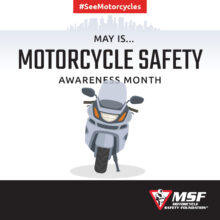October 16, 2006: The gap between consumer and retailer
I have spent nearly my entire adult life involved in the motorcycle business. Over those years I have been a OEM district manager, dealer and for 25 years compiled and chronicled the dealer experience at a level not only unparalleled in the motorcycle business, but perhaps any retail business. Yet, I feel I have learned more in the last three years than the previous 35 about what really drives the sales process.
The difference now is we are talking to the customer. In endless 20 club meetings and management training programs, I heard only what the dealer, sales manager and salesmen believed was happening. The customer’s perception quite often turns out to be something totally different. And, since he/she is the one doing the buying, that is the only perception that really matters.
The real dilemma I faced trying to sort out the different perceptions was that in many cases I knew the dealer and manager quite well. They were quality operators with a staff of well-directed salespeople. Yet, the comments coming from customers we contacted made them seem inept. Why would customers who were unresponsive and resistant to the salespeople tell us they were ignored? Why would customers who did not get very far in the sales process tell us they were not getting enough for their trade-in? Why did they leave the dealership and buy somewhere else, claiming lower price, when the price issue had not been dealt with while they were in the dealership?
There were three revelations. First, after literally hundreds of thousands of calls, we have seldom encountered a showroom visitor who said he had no interest in buying. Second revelation was that they really want to be sold. They will put up barriers and always be “just looking,” but they do expect, and I think genuinely hope, that someone will convince them to do what they really want to do in the first place. The final revelation is the customer has a great deal of ready resources available and comes in more informed, and appears to be a much tougher customer than he really is.
It is very clear that the sale opportunity ends when the salesperson gives up. We deal in expensive, hedonistic toys. What we need to be sure happens every time is that we want to sell as badly as the customer wants to buy. We have yet to have a customer complain that the salesman tried too hard to sell them.
Many years ago I brought to U.S. motorcycle dealers the revelation of finance and insurance. It was a true revelation that has expanded and become a true catalyst for profitability and growth. The revelation now is that we have been spilling more sales opportunities than we have cashed in on. By paying attention to the customer’s perception and staying aware of what drove him to visit the showroom in the first place, and by revising the sales process to recognize what we want the salespeople to do, we find how much more potential there is right on our own showroom.
DEFINING A ‘DEALER’
Every state in the union requires all motor vehicle dealers to be licensed. This includes motorcycles and, in most states, ATVs. To receive a dealer license an applicant must have a place of business, be subject to and pass a background check and in some states post a dealer bond. Very few states have facility or resource requirements. Nor do they mandate minimum service requirement to be offered to consumers.
Up to now the states have relied on the OEMs to establish minimum standards. General Motors, Ford, Honda, Harley-Davidson and all the other manufacturers have served the state and consumers well by establishing and monitoring just how their products were offered to the public.
Motorcycle and ATV dealers in the United States now find themselves competing with retailers offering product that is being sold without any operating requirements or oversight provided by suppliers. Much of what is being offered is from new Asian manufacturers and is substandard. Some is not. Kawasaki, Arctic Cat and other well-established manufacturers are now selling product through mass merchandisers as a shelf item. These “dealers” may meet the state’s definition, but fall well short of industry standards and what consumers should be entitled to.
Complacency, particularly amongst dealers, has always been a problem for the industry. Many dealers I talk to currently do not seem to be all that bothered, as they do not feel the impact yet. If we do not change the state licensing requirements for motorcycle and ATV dealerships as we know them today, we will be facing a very uneven playing field. Rather than conjure up all the potential horror stories, let’s just focus on getting things fixed. Hey, we can do this!
Do not expect any help from the automobile dealers, as they do not have the problem. I would like to think that all of the motorcycle OEMs would help, but they will likely be content to keep their options open. So, it is back to your state dealer association. Legislation defining minimum requirements for motorcycle and ATV dealers is essential and, most importantly, it makes sense and is in the interest of consumers. It does require a little money and it does require that you have an active state dealer association with professional management. If you have not been active in your state dealer association, today is a good day to start. Don’t wait for someone else to do it, the business you save may be your own. psb
Ed Lemco has been involved with the powersports industry for more than 30 years. Lemco, the former owner of Lemco Management Group, is the founder and executive director of the National Council of Motorcycle Dealer Associations. Lemco currently operates a call center for dealers in St Croix.



